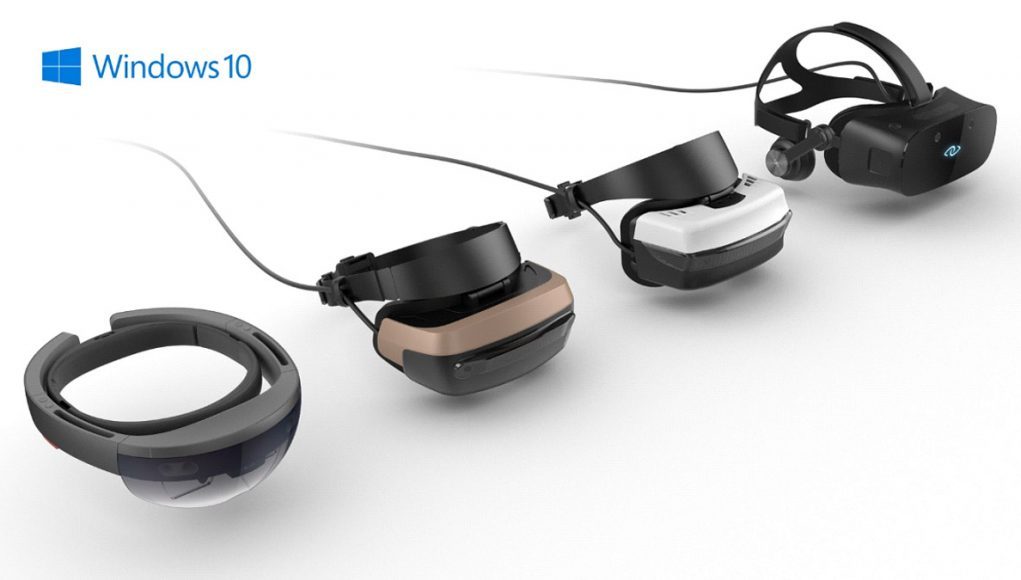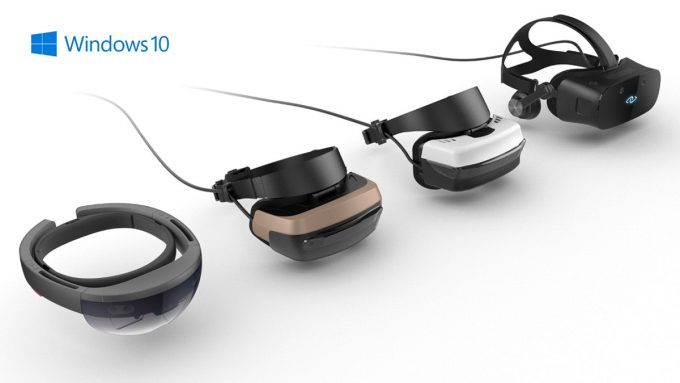Today at the Microsoft’s Windows Hardware Engineering Community event in Shenzhen, China, the company announced that VR/AR (mixed reality) headsets from top manufacturers are due to hit the market in 2017. What’s more, they’ll run on integrated Intel graphics without the need for a dedicated GPU.
Back in October, Microsoft announced that mixed reality headsets for Windows’ forthcoming native headset integration were in development by five major hardware makers: Asus, Acer, Dell, HP, and Lenovo. Today the company confirmed those headsets will hit the market in 2017. The cheapest among them is said to start at just $300. Chinese VR headset maker 3Glasses has also joined the group, and will support the Windows mixed reality environment on their S1 VR headset in the first half of 2017, according to Microsoft. Microsoft’s HoloLens of course will also be in the mix.
There’s no word on what specifications these new headsets will bring to the table, but Microsoft has said they will be equipped with inside-out positional tracking (which doesn’t require external sensors like we see with the Rift and Vive today).
These headsets are being designed to work with the forthcoming Windows 10 Creator Update, which is slated to hit users for free this Spring. The headsets will be able to natively tap into the ‘Windows Holographic’ environment, and run more than 20,000 flat Windows apps, which may also be designed to extend into the virtual environment.
Microsoft and Intel have partnered on a platform specification for these headsets such that they’ll be able to “scale across mainstream Intel architecture platforms natively on [Intel’s CPU-integrated] HD Graphics,” by the end of 2017. That means no need for a high-end dedicated GPU as is required for the current generation of PC-based VR headsets. We noted last month that the apparent Windows Holographic minimum spec was surprisingly low. With more than 400 million Windows 10 users, this push could bring VR to a massive audience.
Now, there’s no telling if the headsets running on Intel’s integrated graphics will be able to power the sort of high-end gaming experiences we see today with PC-based VR headsets. It may be that the companies are lowering the quality bar somewhat in an effort to support a basic VR/AR experience across a wider range of PCs with applications that aren’t as graphically demanding. That said, what the companies have shown off so far is very impressive for integrated graphics. Microsoft claimed that the experience shown below is running on a tiny Intel NUC PC with integrated graphics at 90 FPS:
Only time will tell what level of VR/AR/MR we can expect from integrated graphics and Windows Holographic. It’s likely that a high-end GPU will always be able to push the graphical bar for such experiences much higher, just as has always been the case for PC graphics, but even access to a basic VR experience for a much broader group of users would be a great thing for the growing space.
Now we’re wondering how Microsoft will tie in its next Xbox, ‘Project Scorpio’ which the company says will run high fidelity VR gaming experiences.








